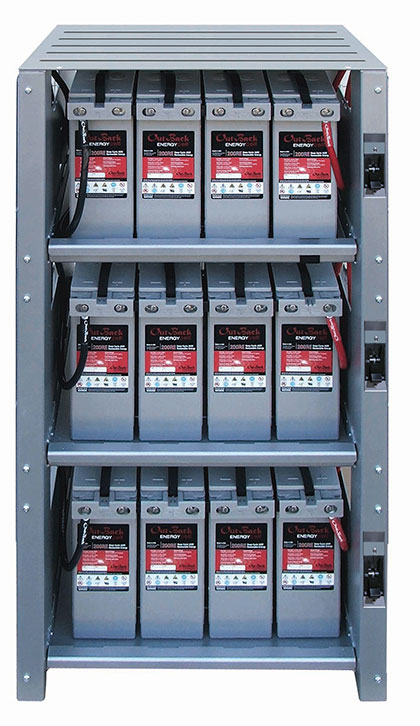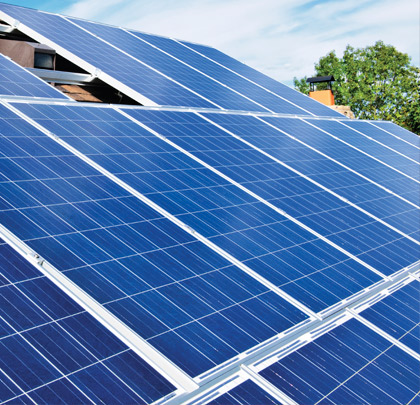Property owners in the market for options to power their buildings’ electrical loads have long considered solar power; however, they frequently didn’t get past that first thought. Misconceptions about solar’s initial costs and complications usually dissuade them, and convince them paying the electric company is just easier. However, contractors need to be aware of the dramatically reduced costs associated with installing and using solar power, in addition to the substantial benefits of using the technology. The greatest growth area today is with the solar-plus-storage model, which couples battery-powered inverters with solar panels to make the system more useful and provides additional benefits for property owners of all kinds. The Rocky Mountain Institute recently found that solar-plus-storage will become a more viable option for installation in the next decade. The trend is the kind contractors must be aware of to make solar a real option for customers.
DEMAND CHARGES
Solar-plus-storage has emerged as the preferred method of using solar energy. Pairing photovoltaic (PV) arrays with energy storage provides tools to use energy when and how it’s most valuable and helps decrease reliance on the grid while keeping access to electricity available when it’s necessary.
Solar does an exceptional job of generating kilowatt-hours (kWh) and, for customers who have net-energy metering, or NEM, available, solar by itself can be the way to go. However, utilities are increasingly relying on variable rates, demand charges, and other peak pricing structures to penalize spikes in load or energy consumed at peak periods, ostensibly in order to run a more balanced grid. Demand charges, which are familiar to most commercial customers, are typically assessed based on the customer’s highest demand during a single 15-minute interval throughout the monthly billing cycle. It’s similar to an Internet service provider charging for the bandwidth of your connection on top of any fees for data you’ve sent across the connection. Demand charges, which represent 30 percent or more of most commercial customers’ bills, are the fastest growing component of many utility bills. While solar by itself can reduce the kWh consumption of a building, it isn’t particularly effective at reducing kWh demand charges. This is an area where solar-plus-storage reveals its value for commercial property owners, by using the storage to cap the maximum draw or demand on the grid, even if you turn on a large load or spin up a production line.

VARIABLE RATE STRUCTURES
Addressing variable or time-of-use (TOU) rates are another way that storage can increase the value of solar. In order to more directly reflect the actual cost of delivering power—and to reward customers who can shift loads from peak periods to off-peak periods—utilities are increasingly implementing variable rate structures so energy costs change throughout the day. Energy storage combined with simple system intelligence can allow a PV system to decrease or eliminate the use of grid power at those peak load periods when it is expensive, while remaining totally transparent to the customer.
Similarly, energy storage can provide a powerful tool to participate in demand-response programs while keeping all aspects of your customer’s business up and operational. In the past, participating in demand-response programs meant having to turn down or turn off certain key loads such as air conditioning, lighting, or other non-essential loads. While this might have sounded okay in concept, in reality, it usually resulted in workers sitting in a dark, sweltering office on the hottest days of the year—while utilities teams wondered why demand-response programs were historically under-subscribed. Today, with solar-plus-storage, commercial accounts can easily participate in demand-response programs while keeping everything up and running, simply by having the system drop the grid and run independently through the event.
SOLAR WITH STORAGE
Solar power has a myriad of benefits for property owners, but it’s difficult to fully harness all dividends without storage. Battery-backed inverters have become more common as the costs of solar components have dropped and new types of storage entrants have come on the scene. Combining PV with energy storage has made it easier for solar projects of all kinds to produce real cost benefits. Solar-plus-storage systems are ideal for commercial property owners because the inverters convert the direct current (DC) energy generated by the PV system and turn it into useful alternating current (AC) power. These systems also manage the grid to ensure that energy is used and shared in the most effective time and manner, not just when the sun is shining. Installing battery-powered inverters along with solar energy means the system itself can generate and store energy, and then make that power available when it’s the most valuable.
Beyond the cost savings, energy storage-backed solar keeps a supply of power available to commercial properties at all times. The stored energy can provide backup power during large storms or natural disasters in the event of widespread outages and the solar PV allows the system to recharge each day, providing extended coverage during short-term and large-scale catastrophic events. For many businesses, the savings in insurance or ability to maintain continuity of business operations can pay for a solar-plus-storage system outright.
Solutions developed by solar-equipment vendors and parts suppliers have given contractors and property owners more options for the kind of grid/hybrid systems that are the most viable from financial and environmental standpoints.
In the past, contractors knew they wanted to use renewable energy more frequently, but the systems were either too expensive or didn’t offer the kind of benefits that made them viable options. Technology has advanced and challenges have been addressed by the development of storage products and solutions. Solar-plus-storage can benefit any utility customer, but its ability to cut utility bills for commercial property owners has made it even more useful for contractors charged with installing renewable energy systems at their customers’ properties. ■
About the Author: Philip Undercuffler is the director of strategic platforms for OutBack Power Technologies, and in his role works to meet the requirements of today’s and tomorrow’s customers for powerful, innovative grid-hybrid and off-grid energy solutions, in addition to participating in the development of policy and codes for grid connected energy storage.
_________________________________________________________________________
Modern Contractor Solutions – December 2015
Did you enjoy this article?
Subscribe to the FREE Digital Edition of Modern Contractor Solutions magazine.

Solar-Plus-Storage Equals True Benefits of Solar for Contractors


